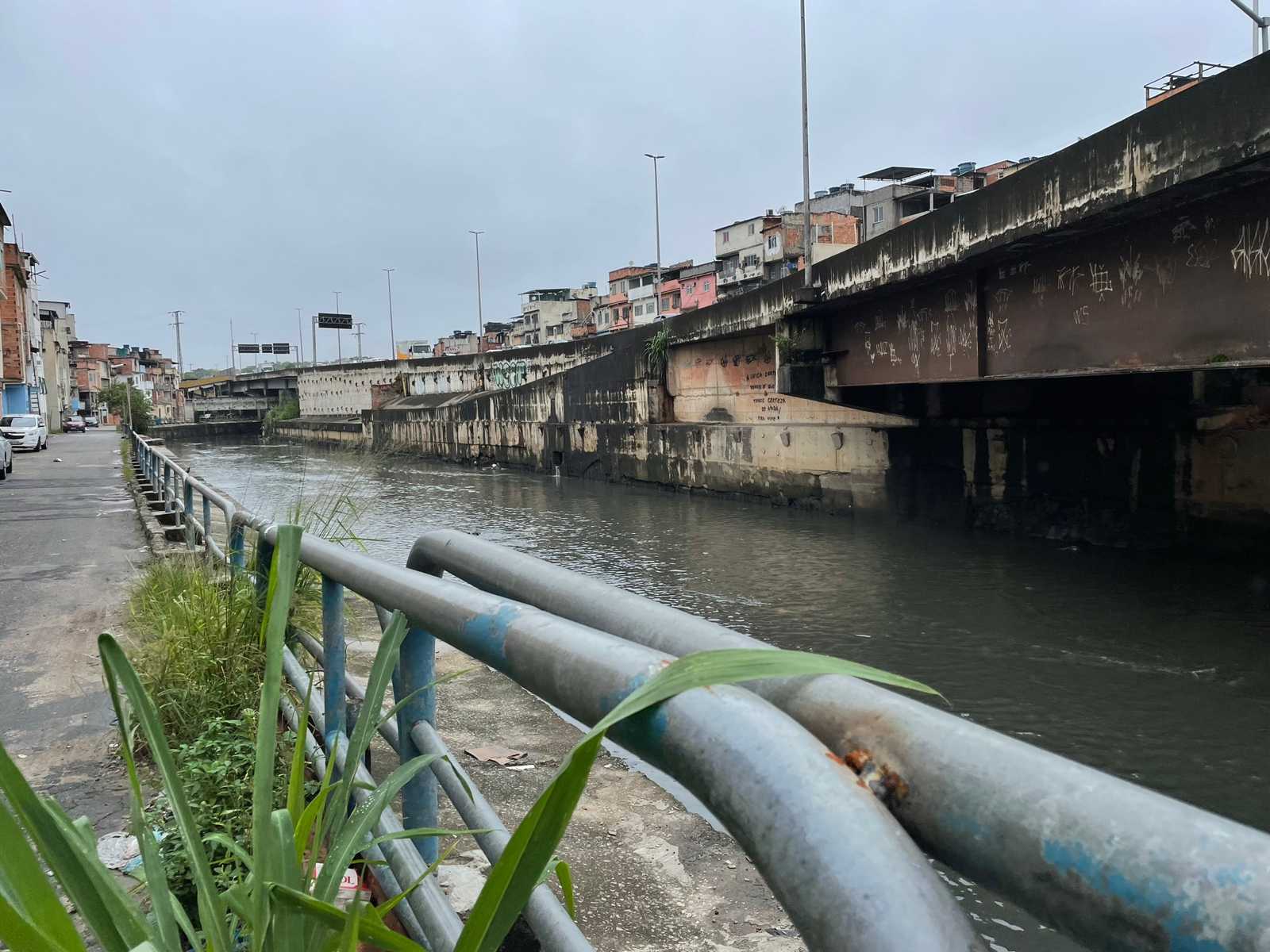

This is our latest article in a series created in partnership with the Behner Stiefel Center for Brazilian Studies at San Diego State University, to produce articles for the Digital Brazil Project on water issues and the LGBTQIAP+ population in Rio’s favelas and in the Baixada Fluminense for RioOnWatch.
Floods have always been common in Rio de Janeiro. However, due to climate change, heavy rain and other extreme weather events are not only gaining intensity but also becoming increasingly frequent. They become particularly aggravated during summer months when the city experiences its greatest rainfall; consequently the greatest disruption and losses take place among those living on hillsides and in low-lying areas.
Peripheral regions and favelas across the state of Rio de Janeiro suffer most, exacerbating and lifting the mask on environmental racism.
Manguinhos: Climate Change Ground Zero
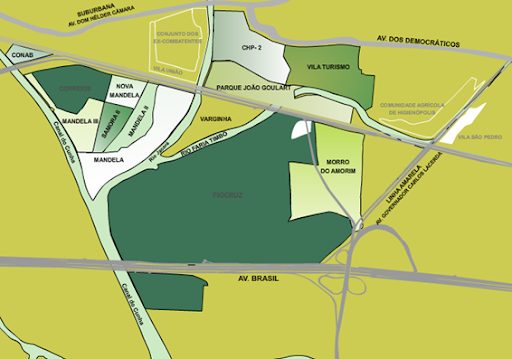
The favela complex of Manguinhos is located in the North Zone of Rio de Janeiro. The Linha Amarela highway passes through its communities, which are near the throughways Avenida Brasil, Rua Leopoldo Bulhões, and Avenida Dom Hélder Câmara (previously Avenida Suburbana). The 2010 federal census estimated the population of Manguinhos at 36,000 residents.
Manguinhos is made up of the following communities: Parque João Goulart, Vila Turismo, CHP-2, Parque Manoel Chagas, Vila São Pedro, Comunidade Agrícola de Higienópolis, Parque Oswaldo Cruz, Parque Herédia de Sá, Parque Horácio Cardoso Franco, Vila Arará, Vitória de Manguinhos and Mandela de Pedra, Vila União, Conjunto ex-Combatentes, Suburbana, Conjunto Nelson Mandela, and Conjunto Samora Machel.
The favelas within Manguinhos suffer with energy injustice, environmental racism, and a high rate of killings by police. According to the report Manguinhos and its Pathways – Childhood and Transit in Manguinhos, the region has the fifth lowest Human Development Index (HDI) numbers in the city.
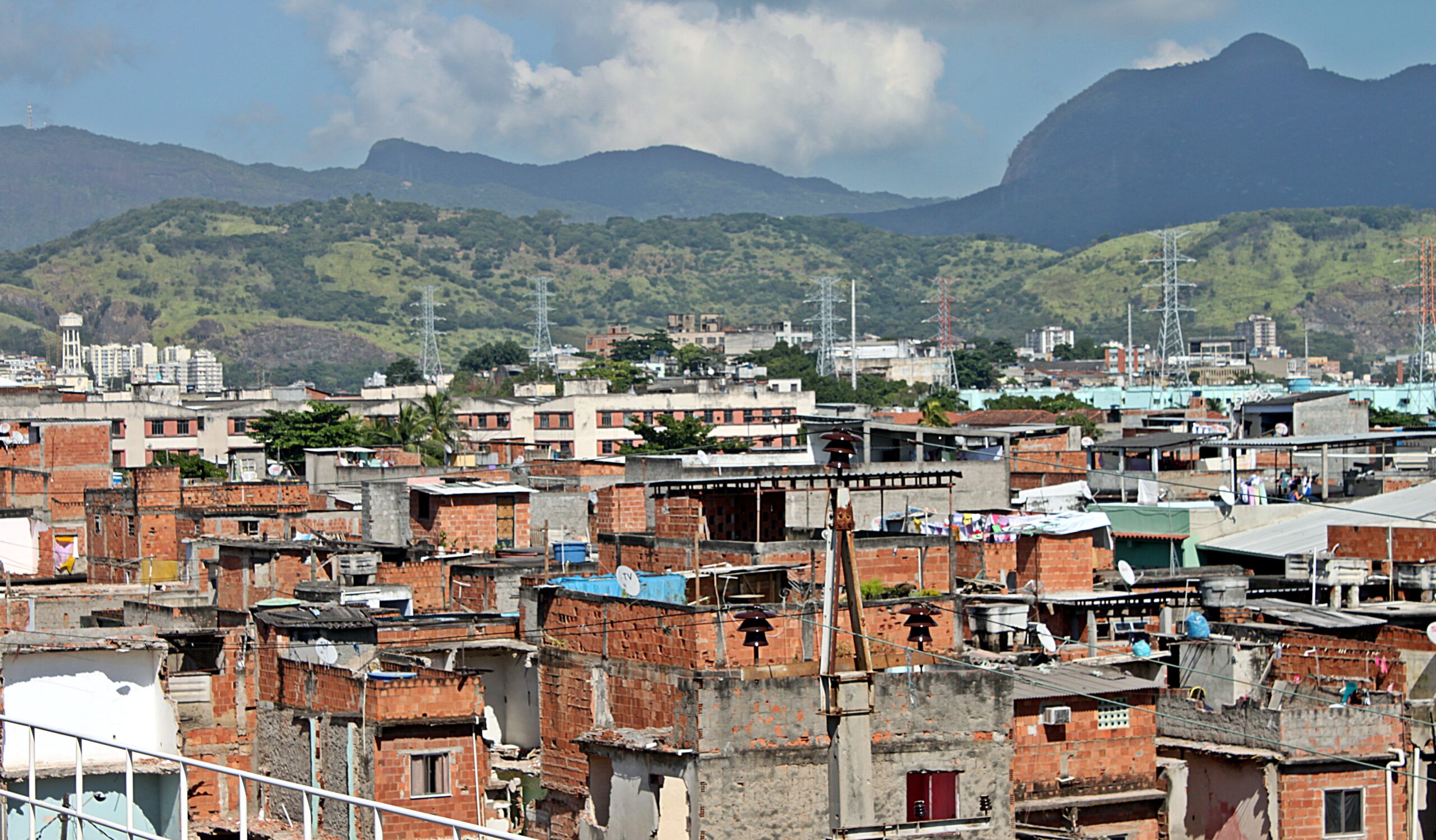
Geographically, Manguinhos is divided by the rivers Faria-Timbó and Jacaré and the Cunha Canal. These polluted bodies of water receive untreated sewage from homes and factories in the region which ultimately end up in the Guanabara Bay.
The State’s failure to provide basic sanitation means Manguinhos’ residents live alongside open sewage and rivers that give off a foul odor and constantly overflow, flooding homes and businesses on the banks of the river and surrounding streets. This contributes to the spread of illness and an increased health risk for those living nearby.
The report Manguinhos Post-PAC: Worsening Floods presents findings about the increase in flooding following construction works carried out by the federal government’s Growth Acceleration Program (PAC). Produced by the Manguinhos Territorial Laboratory (LTM), the report contains photos, timelines, and data covering periods of flooding in the territory, in particular the flood of 2018, referencing different parts of the complex.
No Social Justice without Climate Justice
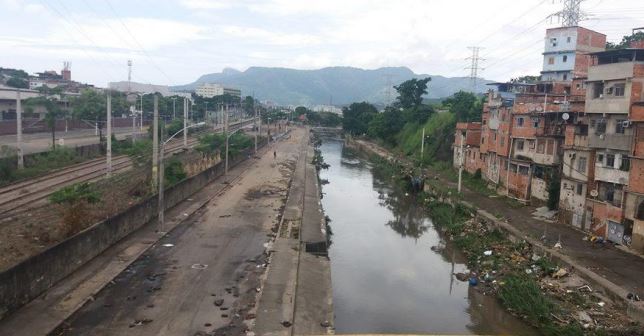
Floods are a part of everyday life for residents in the Vila São Pedro favela. The signal is raised at the first sight of rain. Residents describe seeing refrigerators, motorbikes, dumpsters, and even dogs being swept away in the floodwaters on Rua Uranos, which passes through the favela towards Bonsucesso. The Faria-Timbó River is now silted up and has basically become a sewage canal; when heavy rain hits, the river overflows and floods streets, homes, and businesses.
Chirley Vicente, 57, a resident of Vila São Pedro for 25 years, is exhausted. A social worker and founder of the Institute for Social Action, Sport, and Education (IASESPE), known locally as the Skate NGO, Vicente has been working in Manguinhos for 20 years. The main goal of the Institute is to support educational and sport development for children in the community and their family members.
However the Institute is not immune to the flooding that plagues the region. Located on Rua Humboldt—the main access road into the favela, linking Rua Uranos to Avenida dos Democráticos—IASESPE’s base has suffered for years with constant flooding from the Faria-Timbó River. The Institute’s building, equipment, toys, school resources, and administrative materials have all been destroyed by water and sewage. Heavy rains in 2018 led to floodwater gushing in through the Institute windows and filling rooms up to a height of over two meters.
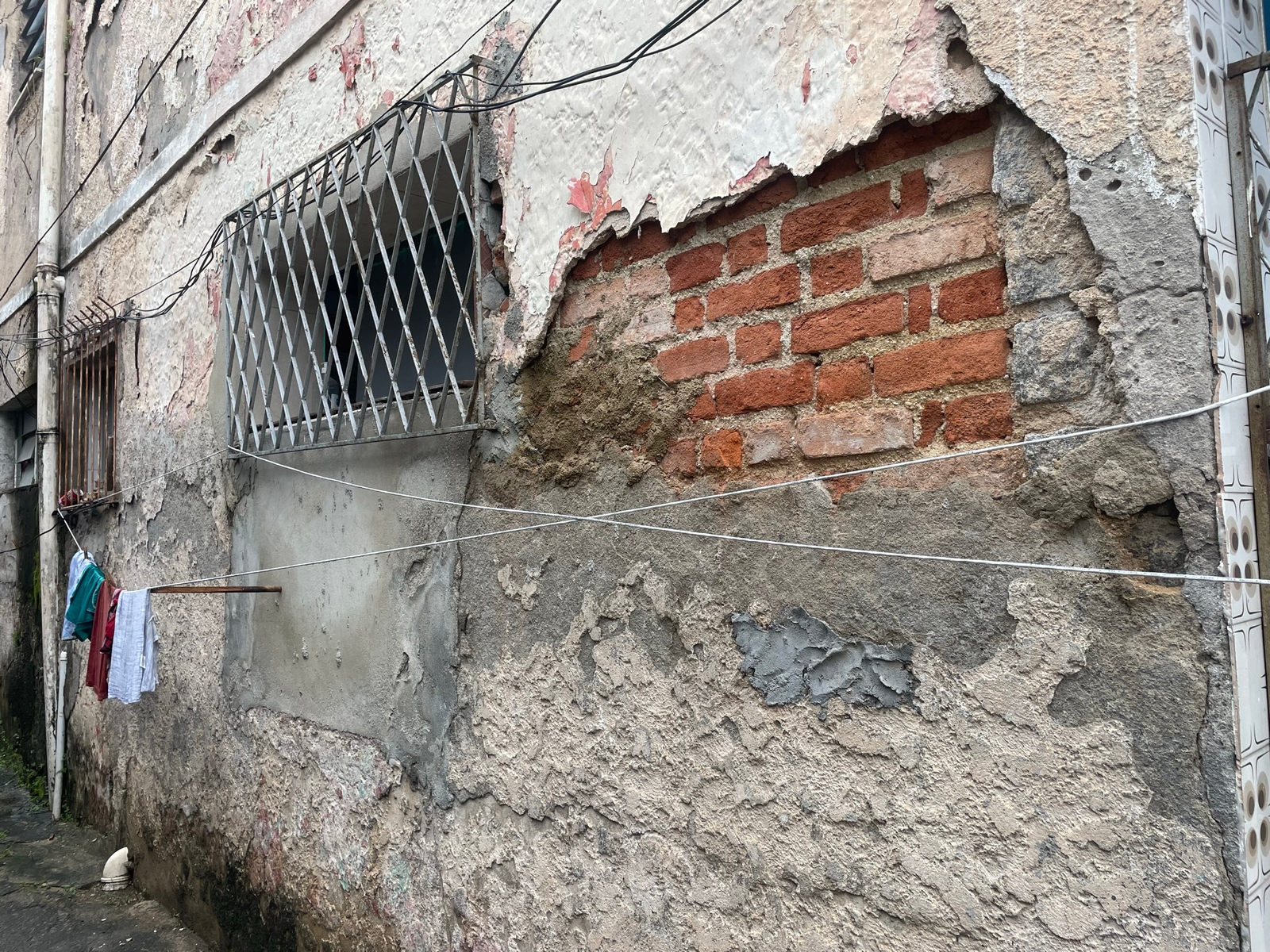
Vicente reports that summer rains are her biggest concern and have led the Institute to suspend its activities and remain closed from mid-December to April every year, resuming activities once the rainy season has ended. Unfortunately, according to Vicente, there has been no dialogue with the authorities and residents haven’t been approached or received any proposal from the municipal government, state government, or any other public office to help tackle the dangerous situation presented by the overflowing rivers in Manguinhos.
Vicente also affirmed that this is not from a lack of attempts by residents to engage public officials. The lack of response from the authorities is extinguishing any hope residents have for change:
“I can’t leave this space because I don’t have anywhere to go and I don’t want to abandon the project. We can see that children here have nothing. We’ve submitted loads of petitions. But [if] nobody has died, no houses have collapsed, nobody does anything. You won’t see us complaining on TV. You won’t see us complaining on the morning, noon, or evening news. It’s just become so normalized that nobody cares.” — Chirley Vicente
While the streets of Rua Humboldt and Rua Uranos remain flooded in the summer, the roads above Vila São Pedro are higher up and not directly affected by floodwater. However, residents of this region become isolated, unable to go anywhere, finding themselves surrounded by water and sewage. They aren’t able to enter or leave the territory because all the access roads are lower down and completely flooded. Aline Sousa, a resident of Vila São Pedro since she was seven, now 39, affirms:
“I know a lot of people who have lost things to these floods. A lot of my friends’ homes flood. My house doesn’t flood, but you can’t enter or leave. People are stranded, they can’t work, they can’t do anything.”
Marcos Antônio dos Santos, 67, spoke about living with episodes of flooding for almost 40 years—the entire time he has lived in Vila São Pedro. A local business owner, he said the precarity and lack of care for the region also comes from the municipal waste collection utility, COMLURB.
“Not even trash collectors come here. When elections come around, they show up, but they don’t come otherwise. We have to sweep the streets and clean them because they don’t come.” — Marcos Antônio dos Santos
Marcos filmed the below video from his shopfront in 2021 showing Rua Uranos overflowing with water during a flood:
Walking through the streets in the area, you can see marks left behind by the floods on people’s homes with damp walls and mold. Another striking aspect is the amount of garbage that has accumulated in a high up area by the Faria-Timbó River—trash trapped following previous floods that hasn’t been collected. We can’t tell the exact height of the garbage attached to the fences, but it’s notably much higher than the normal water level and very near people’s homes.
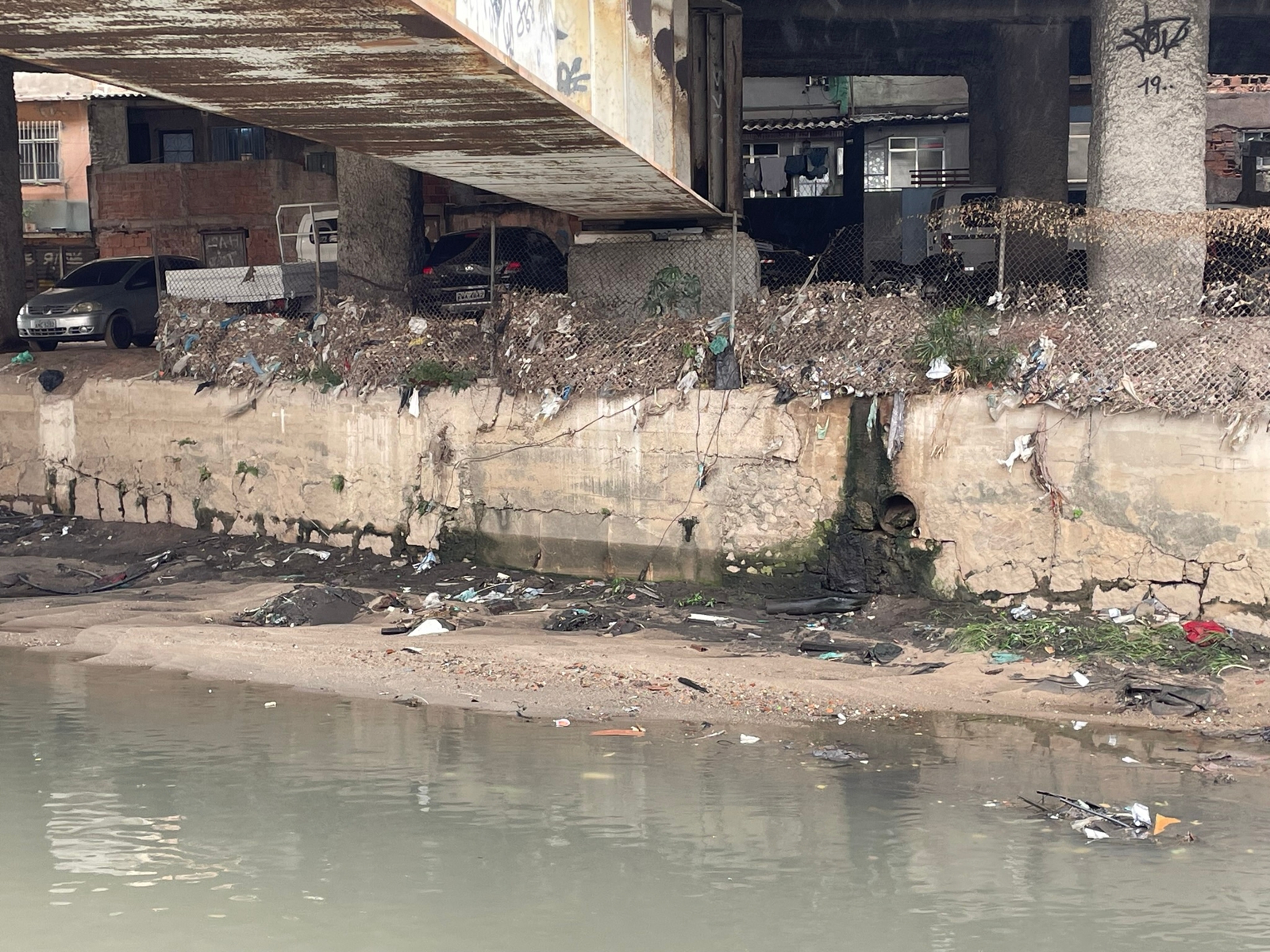
While public agencies fail to act, residents continue suffering the same problem year after year and have to look to each other for support with each crisis. It is no different with IASESPE. Vicente dreams of the day when she will be able to make repairs to the Institute’s base, replace all the material lost to flooding, and fully support residents without having to close her doors in fear of floods.
Constant flooding has meant rooms at IASESPE are closed off after being left impossible to use, as well as the loss of vital resources for carrying out day-to-day activities. In spite of this, Vicente is still distributing baskets of basic foodstuffs to 120 of the most vulnerable families the Institute supports. This is the only activity the project is still able to carry out, because it doesn’t take place at its headquarters. Vicente spoke further about the uncertainty surrounding the ability of the organization to function on account of the rain.
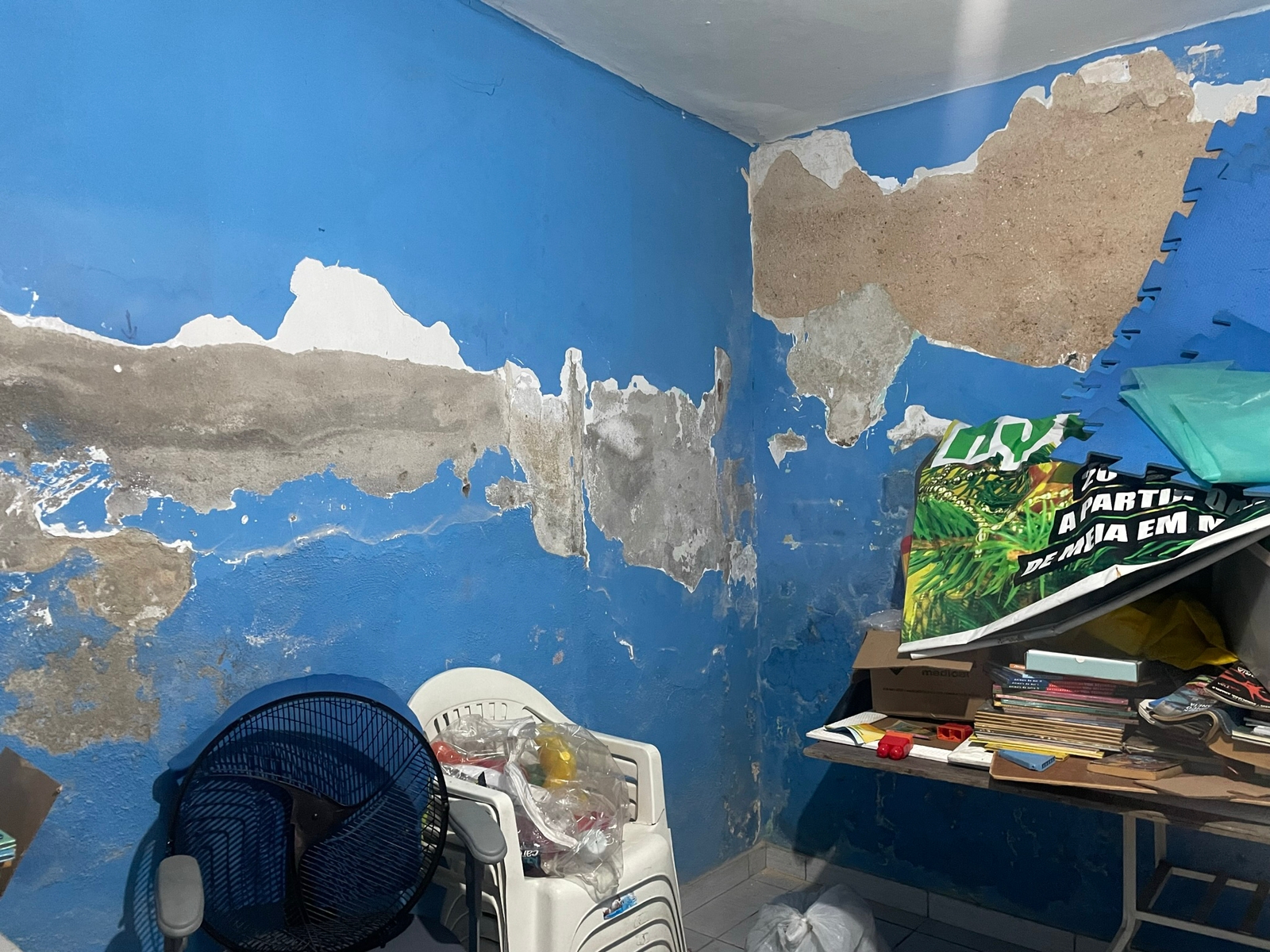
“On Friday we were painting some woodwork and the rain started to close in. I had to send everybody away. I put everything higher up and prayed for the worst not to happen. It’s hard seeing the Institute empty. While everyone else is back out partying and having social gatherings, we are having to close our doors because of the rain.” — Chirley Vicente
Vicente hasn’t given up looking for different ways to draw the authorities’ attention to the situation in Vila São Pedro and the floods that affect IASESPE, homes, and businesses in the region. It’s important to underscore that IASESPE is an essential social action project in the region for the care and social assistance of residents.
About the author: Juliana Pinho is a resident of Nova Holanda, one of the favelas that make up Complexo da Maré, and is a sociologist (UFRJ) and journalism student (UCAM). A popular communicator and community organizer, Pinho co-founded the Maré Mobilization Front, is a member of the Palafitas Agency, and is responsible for management and planning of the For Her project. Currently, she manages NGO Fight For Peace‘s portfolio and is a reporter for the Entretetizei portal.
